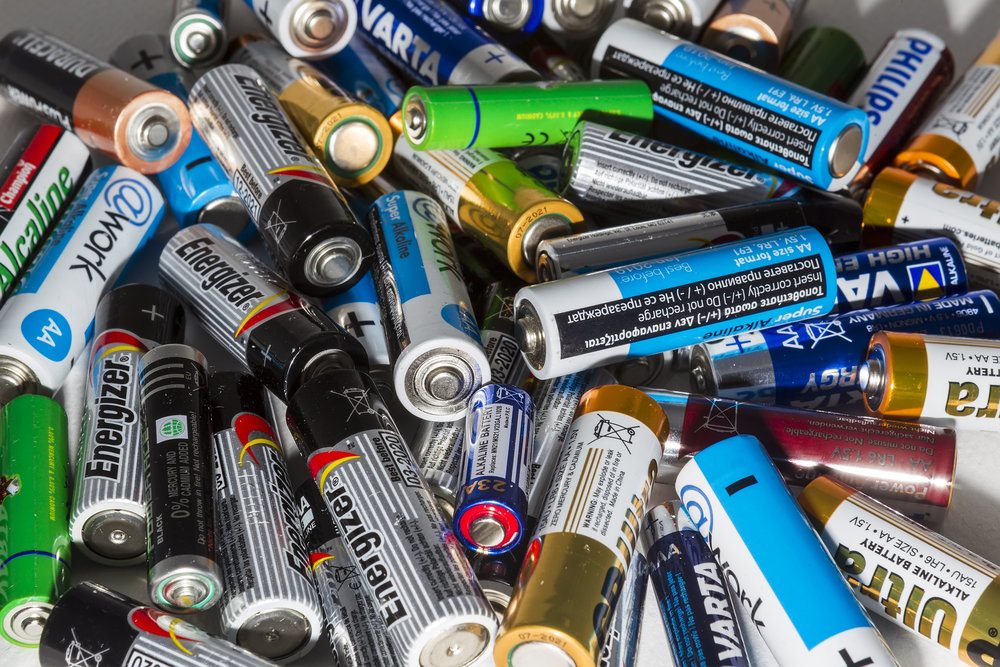
There are a dozen bills relating to battery and e-scrap recycling in play across nine states in 2024. | Ververidis Vasilis/Shutterstock
With most legislative sessions reaching the halfway point, there are a dozen bills in play that would create or amend state electronics recycling programs or regulate battery disposal.
Wisconsin expanded its e-scrap program by passing SB 866, which Wisconsin Gov. Tony Evers signed on March 14.
Here’s a roundup of other bills that are still working their way through the legislative process.
E-scrap recycling program changes
There are a pair of bills in Maryland (House Bill 830/Senate Bill 686) that would move the state’s Covered Electronic Device Recycling Program to the Department of the Environment and update the program and create a separate covered electronic device recycling account within the State Recycling Trust Fund.
It changes categories of covered items to Tier I and Tier II. Tier I includes computer monitors, televisions and video display devices. Tier II covers laptop computers, digital notebooks, readers and tablets, cell phones, the central processing unit of a computer, printers, scanners, copiers and any other computer or electronic device or accessory that has a plug or battery.
In addition, the bills would create a consumer recycling fee of $10 for Tier I and $5 for Tier II devices, paid upon purchase of a new device.
The fees would be distributed from the account to reimburse authorized recyclers or collectors and pay for the program. The bills would also create a Covered Electronic Device Advisory Council.
They are both currently in the House Environment and Transportation Committee.
Hawaii’s SB 2545 would make fixes to 2022 changes in the Electronic Device Recycling and Recovery Act.
“In the implementation of this updated program, manufacturers have struggled to comply with all of the new requirements in Act 151, especially the increased weight targets, as the weights of electronics have decreased over time; and the increased penalties for failing to meet the electronic device collection requirements,” SB 2545 states. “In addition, the current program has not resulted in a significant increase in electronic waste collection sites.”
The 2024 bill would increase collection opportunities and clarify that manufacturers may coordinate collection activities. It has passed its second reading in the Senate and is now in the Senate Commerce and Consumer Protection Committee.
In Minnesota, SB 3940/HB 3566 would also amend the state e-scrap collection program, adding the requirement for manufacturers to work under a clearinghouse model, which is similar to a producer responsibility organization. It would also change the fee structure to a sliding scale, based on the manufacturer’s market share of covered electronic devices sold in this state.
The pair of bills would also establish an account specifically for the e-scrap program fees, create an Electronics Recyclables Advisory Committee and require a study that examines the barriers to electronics recycling and recommends ways to overcome the barriers. Those bills are both currently in the Senate Commerce and Consumer Protection Committee.
Alaska’s SB 175 would set up an electronic product stewardship program and establish an advisory council to oversee it.
If passed, the bill would require manufacturers to register, submit a plan or join a manufacturer clearinghouse by June 30, 2027.
Financial responsibility would be calculated based on the manufacturer’s market share for each covered electronic device category by weight. It includes convenience requirements and a landfill ban for covered electronic devices starting in 2029.
Covered electronic devices include: computers and small-scale servers; computer monitors; televisions; printers, facsimile machines and scanners; digital video disc players, digital video disc recorders and videocassette recorders; video game consoles; microwave ovens; digital converter boxes, cable receivers and satellite receivers; and battery-operated portable digital music players, computer keyboards, computer mice and cables.
SB 175 is currently in the Senate Resources Committee.
Battery stewardship bills
There are also a half-dozen bills seeking to create or update battery stewardship programs and otherwise regulate battery disposal.
New stewardship programs are in play in Minnesota (SB 4711), which is in the Senate Environment, Climate and Legacy Committee; Illinois (HB 5348/SB 3686), which is being amended in House and passed a third reading in Senate; and Connecticut (HB 5226), which is in the Legislative Commissioners’ Office.
Wisconsin HB 1205 would require battery producers to administer the state battery collection and recycling programs. It is in the House Environment Committee. In Vermont, SB 254 would add rechargeable batteries and battery-containing products under the state’s battery stewardship program. That bill passed out of the Senate and is in the House Environment and Energy Committee.
There are two landfill bans for lithium-ion batteries active as well: New Hampshire’s HB 1386, which recently passed out of the House and is in the Senate Energy and Natural Resources Committee, and Illinois’ SB 3206, which is in the Assignments Committee.
Finally, Wisconsin’s HB 987/SB 906 would require the Department of Natural Resources to provide specific education about rechargeable batteries and provide grants for collecting and recycling rechargeable batteries. Those bills are both in the House Rules Committee.

